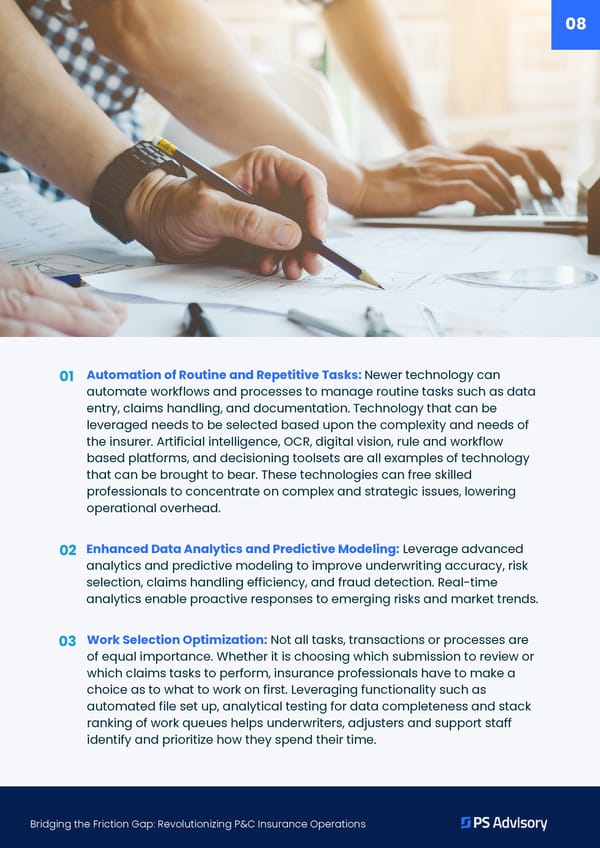Automation of Routine and Repetitive Tasks: Newer technology can automate workflows and processes to manage routine tasks such as data entry, claims handling, and documentation. Technology that can be leveraged needs to be selected based upon the complexity and needs of the insurer. Artificial intelligence, OCR, digital vision, rule and workflow based platforms, and decisioning toolsets are all examples of technology that can be brought to bear. These technologies can free skilled professionals to concentrate on complex and strategic issues, lowering operational overhead. 01 Enhanced Data Analytics and Predictive Modeling: Leverage advanced analytics and predictive modeling to improve underwriting accuracy, risk selection, claims handling efficiency, and fraud detection. Real-time analytics enable proactive responses to emerging risks and market trends. 02 Work Selection Optimization: Not all tasks, transactions or processes are of equal importance. Whether it is choosing which submission to review or which claims tasks to perform, insurance professionals have to make a choice as to what to work on first. Leveraging functionality such as automated file set up, analytical testing for data completeness and stack ranking of work queues helps underwriters, adjusters and support staff identify and prioritize how they spend their time. 03 08 Bridging the Friction Gap: Revolutionizing P&C Insurance Operations
 Bridging the Friction Gap: Revolutionizing P&C Insurance Operations Page 7 Page 9
Bridging the Friction Gap: Revolutionizing P&C Insurance Operations Page 7 Page 9